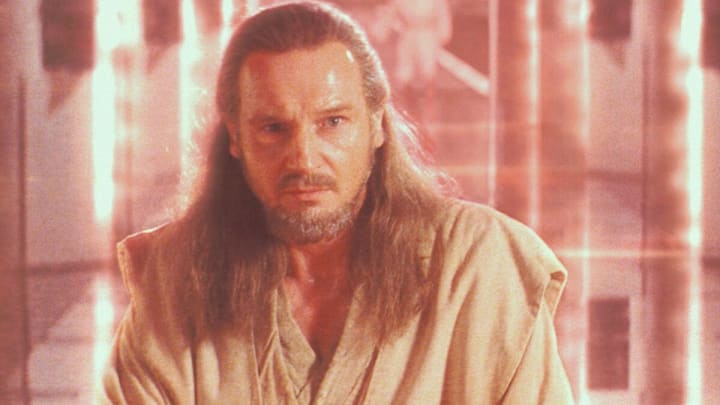The Duel of the Fates in The Phantom Menace is one of the most thrilling and important lightsaber battles in all of Star Wars. Jedi Master Qui-Gon Jinn holds his own against a double-bladed lightsaber wielded by the terrifying Darth Maul, even when separated from his Padawan. The tides suddenly turn when Maul strikes the hilt of his lightsaber into Qui-Gon's face, dazing him. The distraction is all Maul needs to stab the Jedi through his abdomen.
As a result, a great Jedi died, and even worse, this one moment set off a chain reaction of events that ultimately led to the fall of the Jedi Order. It is a heart-wrenching scene that shocked fans when the film first premiered. However, a recent interview has revealed that one important contributor to this project was unhappy with the way the scene played out. Liam Neeson, the actor who played Qui-Gon, feels that the death was "a bit namby-pamby". He went on to joke that Qui-Gon was "supposed to be a Master Jedi", but he still fell for a classic fake-out attack.
With Neeson's interpretation, Qui-Gon's death is a disappointment that doesn't live up to the electric atmosphere created during the preceding duel. Someone with as much experience as Qui-Gon should not have fallen for such a silly ruse. Of course, his death is necessary for the Star Wars story to occur. If he had been able to train Anakin, Vader would never have existed. Nevertheless, if this death was required, it could at least have been a death more befitting a Jedi of his rank and experience.
Just moments later, Darth Maul earned a truly thrilling battle wound when Obi-Wan sliced him in half at the waist. Between the action-packed duel that killed Mace Windu and Vader's emotional final speech, we have seen Star Wars deaths encompass a range of emotional experiences. Yet, Qui-Gon's falls flat in comparison with his simple wound, earned through a rookie mistake.
Furthermore, serious lightsaber wounds have proven to be survivable in recent projects such as in Obi-Wan Kenobi, Ahsoka, and The Force Awakens. Darth Maul himself, or at least his top half, was shown to have survived his nasty fall in The Clone Wars. Apparently, with immediate medical attention, characters live to fight another day. Yet, Qui-Gon proves an exception to the rule.
Many fans have complained that it has become too easy to survive a lightsaber wound and there is some validity to the idea that people tend to survive or perish based on the necessity of the plot. If characters are saved by their plot armor alone, the story can become less interesting. Despite this criticism, it is also reasonable to assert that if anyone is breaking the established rules for lightsaber wounds, it is Qui-Gon. Most other characters are able to survive these wounds if they get help in time. So too should Qui-Gon.
If Qui-Gon's death scene had been prompted by a more sophisticated attack and suffered more intense injuries, it wouldn't just follow the pattern for lightsaber wound survivability. It would also grant the Master Jedi dignity. He would not fall based on a silly trick; he would be outmatched by superior skill and strength. Neeson would have gotten his wish, for the Jedi to demonstrate the skill of an accomplished fighter, even at the end.
More from Dork Side of the Force:
